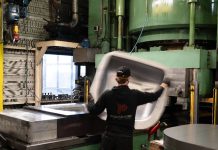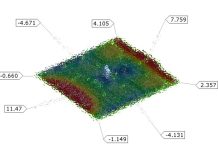Striving to establish a connection between the virtual world of engineering software and the tangible realm of manufacturing production is a worthy goal. However, what steps can be taken if the initial trial falls short of the form tolerance specification due to part springback?
While it’s understood that a multitude of variables influence the extent of a part’s springback, how many of these factors can be controlled when aiming to produce a satisfactory part from the trial press, or when encountering occasional deviations from specification limits during production? These concerns have been voiced, particularly by customers working with advanced high-strength materials, specific grades of stainless steel, and aluminum.
Not to worry . . . AutoForm’s Generic Compensation feature comes to the rescue, allowing you to import scan data of the press-formed part and apply compensation morphing to the tool geometry, aligning it with the desired form tolerance.

This is a fairly simple method for achieving the desired outcomes. A vector field is generated in relation to the reference and measured geometries. This vector field is then reversed to apply compensation morphing to the tool geometries. Customers appreciate this generic compensation approach for making final adjustments to tool geometries or even using it when initial simulation results are unavailable or incomplete. This could be the case in takeover or engineering change scenarios, where initial simulation data might not be accessible. In such cases, the tool and part geometries can be scanned and imported into the software using this generic compensation method. To see how this generic compensation module works with scan-imported data, please refer to the brief video demonstration. This method is much simpler and more precise than performing compensation morphing within a CAD environment, ultimately saving you valuable time and money.
The springback II training by AutoForm now covers this generic compensation technique. We encourage you to make the most of this module and reach out if you have any further questions or concerns. The feedback I’ve received from many of my customers suggests that this is both impressive and user-friendly.
For further insights, you can read a related blog post article here: Volvo Tool & Die: First AHSS Digital Compensation a Forming Success for New XC40 “All Electric” – FormingWorld













